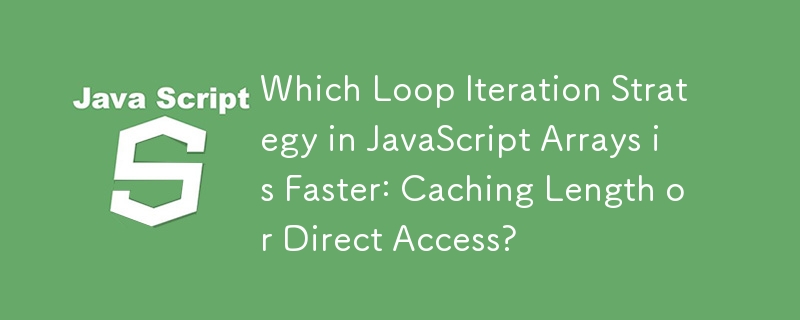

Determining the Optimal Loop Iteration Strategy for JavaScript Arrays
Various recommendations exist for writing loops to iterate through arrays in JavaScript. One common approach involves caching the array length outside the loop, as in:
<code class="js">for (var i = 0, len = arr.length; i < len; i++) {
// Loop body
}</code>This technique is purported to improve performance by avoiding repeated length calculations within the loop.
However, other developers argue that modern JavaScript engines automatically optimize loop iterations and that the following simpler approach is equally efficient:
<code class="js">for (var i = 0; i < arr.length; i++) {
// Loop body
}</code>Which of these approaches is actually faster in practice?
Performance Benchmarking Results
After extensive testing using modern browsers, the following result was obtained:
The fastest and recommended loop iteration method is a standard for-loop with length caching:
<code class="js">var i = 0, len = myArray.length;
while (i < len) {
// Loop body
i++
}</code>Advantages of Length Caching
While JavaScript engines may optimize loop iterations in certain scenarios, the explicit length caching technique offers several advantages:
Conclusion
Although modern JavaScript engines strive to optimize loop iterations, the explicit length caching approach remains the preferred method for both performance and clarity. It eliminates potential performance concerns and enhances the overall readability of the codebase.
The above is the detailed content of Which Loop Iteration Strategy in JavaScript Arrays is Faster: Caching Length or Direct Access?. For more information, please follow other related articles on the PHP Chinese website!




